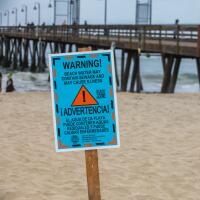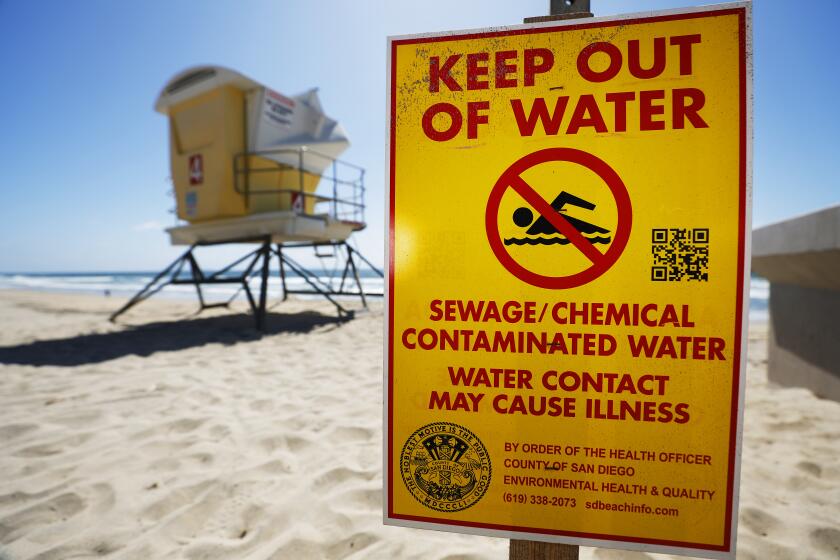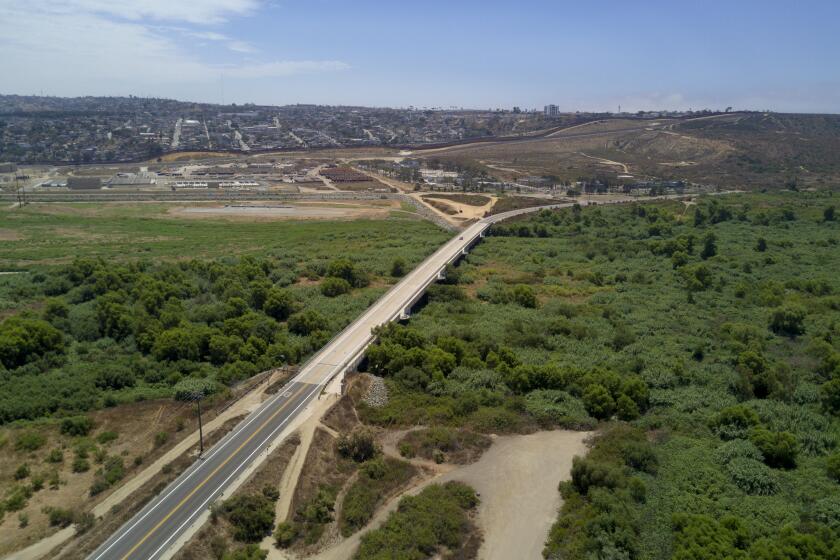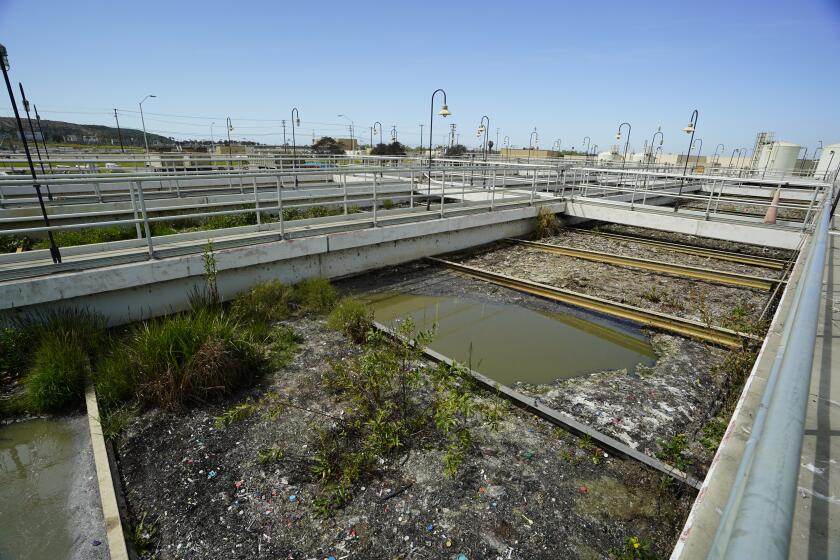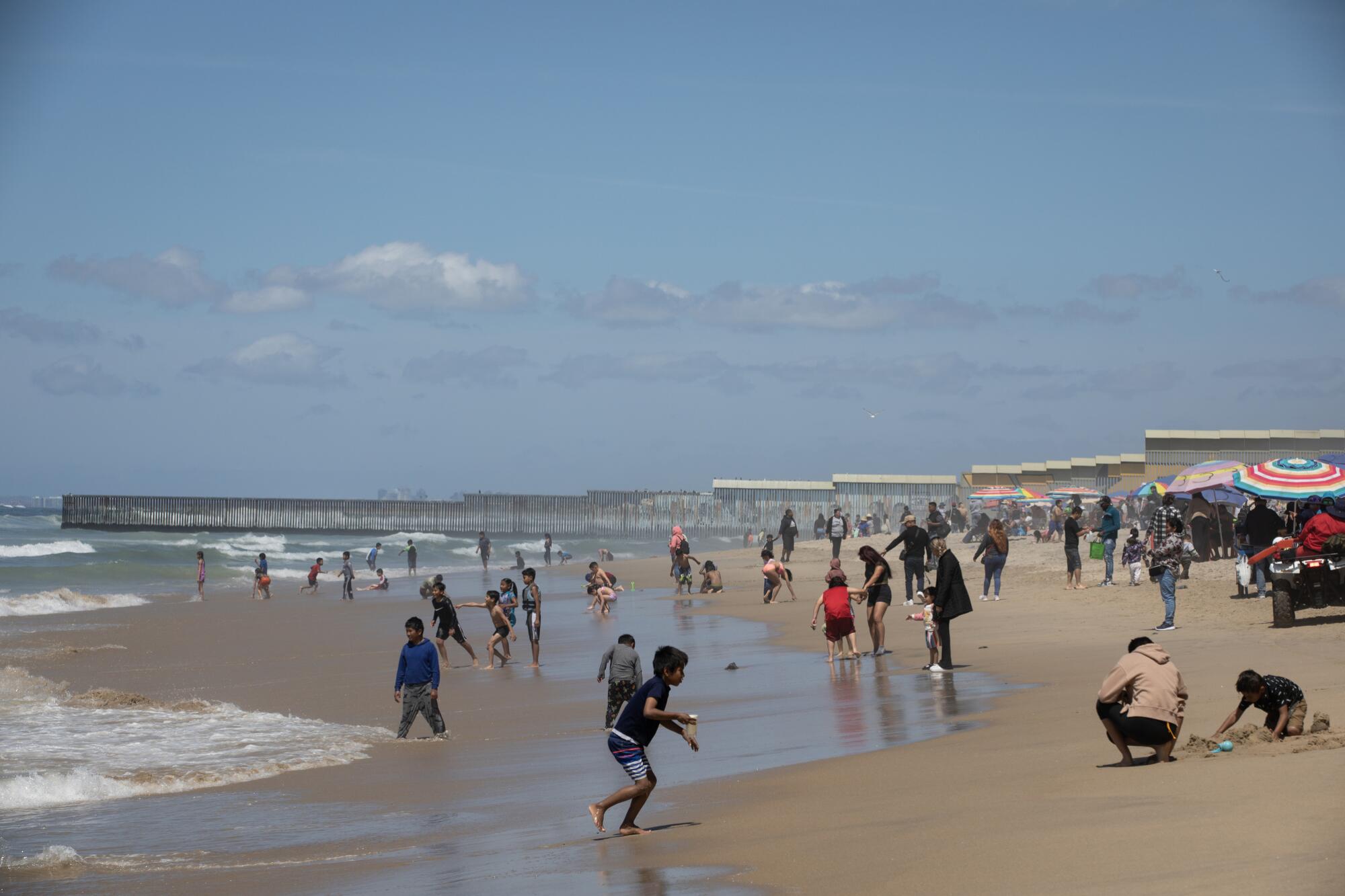
The two communities divided by the U.S.-Mexico border have long been connected by the same environmental crisis plaguing their shared Pacific Ocean
Over spring break, residents of Tijuana and Imperial Beach flocked to the beach under sunny skies — two cities, just miles apart, same ocean.
North of the U.S.-Mexico border, joggers pounded along the Imperial Beach shoreline — but kept their shoes on. Onlookers watched the San Diego and Tijuana skylines from the 60-year-old wooden pier. And a few people, scattered like freckles on a sun-kissed face, sat several feet away from the wettest sand to watch the waves. But no one dared get in the water.
This story is for subscribers
We offer subscribers exclusive access to our best journalism.
Thank you for your support.
In Playas de Tijuana, Holy Week celebrations brought hundreds of colorful umbrellas to the beach and the sounds of banda and norteño music across the sand, the border fence serving as a constant background. Many families and friends had also chosen to enjoy the water from afar, heeding the beach signs that warned them of unsafe water quality levels. But it didn’t stop the more than two dozen children from splashing in the surf.
“We just want to have a good time,” said Tijuana resident Andrea Figueroa, who went with several friends.
Back in Imperial Beach, resident Gavin Meagher watched as his small children ran around the sand. “People have gotten sick,” he said as he steered them from playing in the water.
The two communities divided by the U.S.-Mexico border have long been connected by the same environmental crisis plaguing their shared Pacific Ocean.
Years of negligence and underinvestment in wastewater treatment plants from both countries have led to illnesses, beach closures and economic downturns as sewage-tainted water flows through the binational Tijuana River before reaching the ocean. The main culprit has been a defunct wastewater facility along the coast in Mexico, about 6 miles south of the border, that spews about 35 million gallons of raw sewage a day into the ocean.
It is a saga that has at times unfolded differently in each country, a result of contrasting cultures, resources and political will. But residents of Tijuana and San Diego County’s South Bay communities share both the despair of decades of neglect — and the hope that change is possible.
“There’s nothing more important than water,” said Margarita Díaz, director of Proyecto Fronterizo de Educación Ambiental, a Tijuana-based environmental nonprofit.
But some reprieve appears on the horizon thanks to mounting pressure from elected officials and environmental activists from both sides of the border.
Most recently, the U.S. Congress allocated money to help fix a dilapidated treatment plant in San Diego that serves as Tijuana’s backstop. And Mexico broke ground earlier this year on the rehabilitation of the San Antonio de los Buenos plant in Punta Bandera, a facility in Baja California that has been inoperative for years. Both projects, part of a 2022 treaty between both nations, are expected to end the frequent beach closures. Officials have said frontline communities will feel relief gradually.

“Once the work at the plant is completed, (the issue) will be reduced to the maximum extent possible,” Baja California Gov. Marina del Pilar Ávila said last month while addressing beach closures.
‘More information is needed’

Of the 289 beaches tested by Mexican health authorities before Holy Week, one of the biggest holidays in the country, all but 2 percent were deemed safe for recreational use. Those in Tijuana and Rosarito made up four of the six unsafe beaches nationwide, according to the Federal Commission for the Protection Against Health Risks.
That Tijuana beaches were crowded on Semana Santa despite signs of closures didn’t surprise Díaz, as she has seen residents grow accustomed to the polluted waters.
“But it does worry me a lot,” said Díaz, who co-founded the environmental group more than 30 years ago. “Not everybody knows where the water comes from and how it is managed. Not everybody knows about the water crisis we are in. It’s not apathy; I think more information is needed.”
Baja California’s secretary of health, Adrián Medina Amarillas, said that during and after Holy Week there were a few cases, without giving a specific number, of illnesses believed to be related to the pollution, such as skin infections or diarrhea. “It was not a number that would have put us on alert at the health centers,” he said.
Imperial Beach Mayor and California Coastal Commissioner Paloma Aguirre agreed that more outreach was needed but said Mexico is headed in the right direction. The first-generation Mexican American official was raised in Puerto Vallarta before relocating to the U.S. in 2001. She has dedicated the last 20 years to ending cross-border pollution as an activist and now as the city’s first Latina mayor.
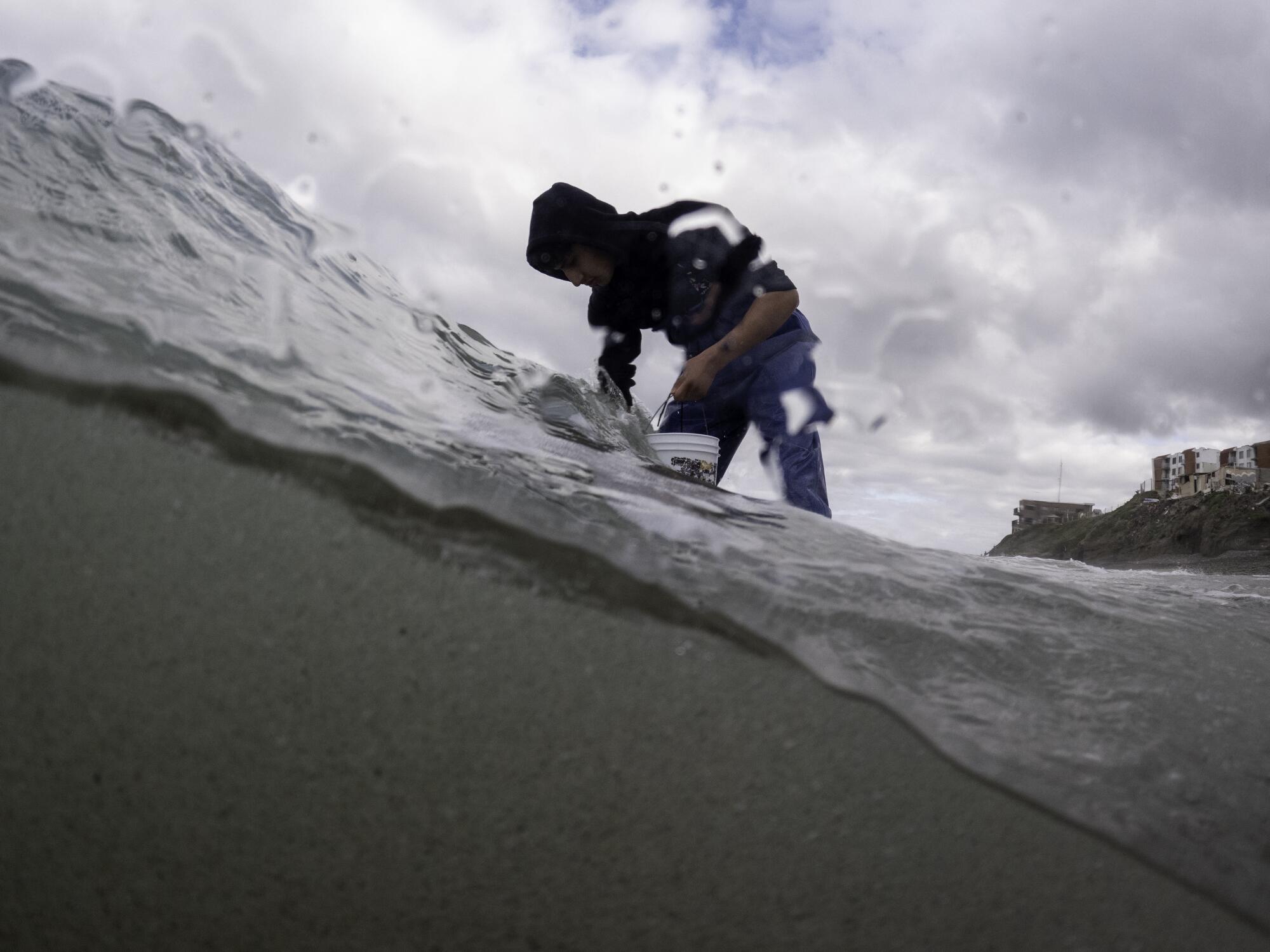
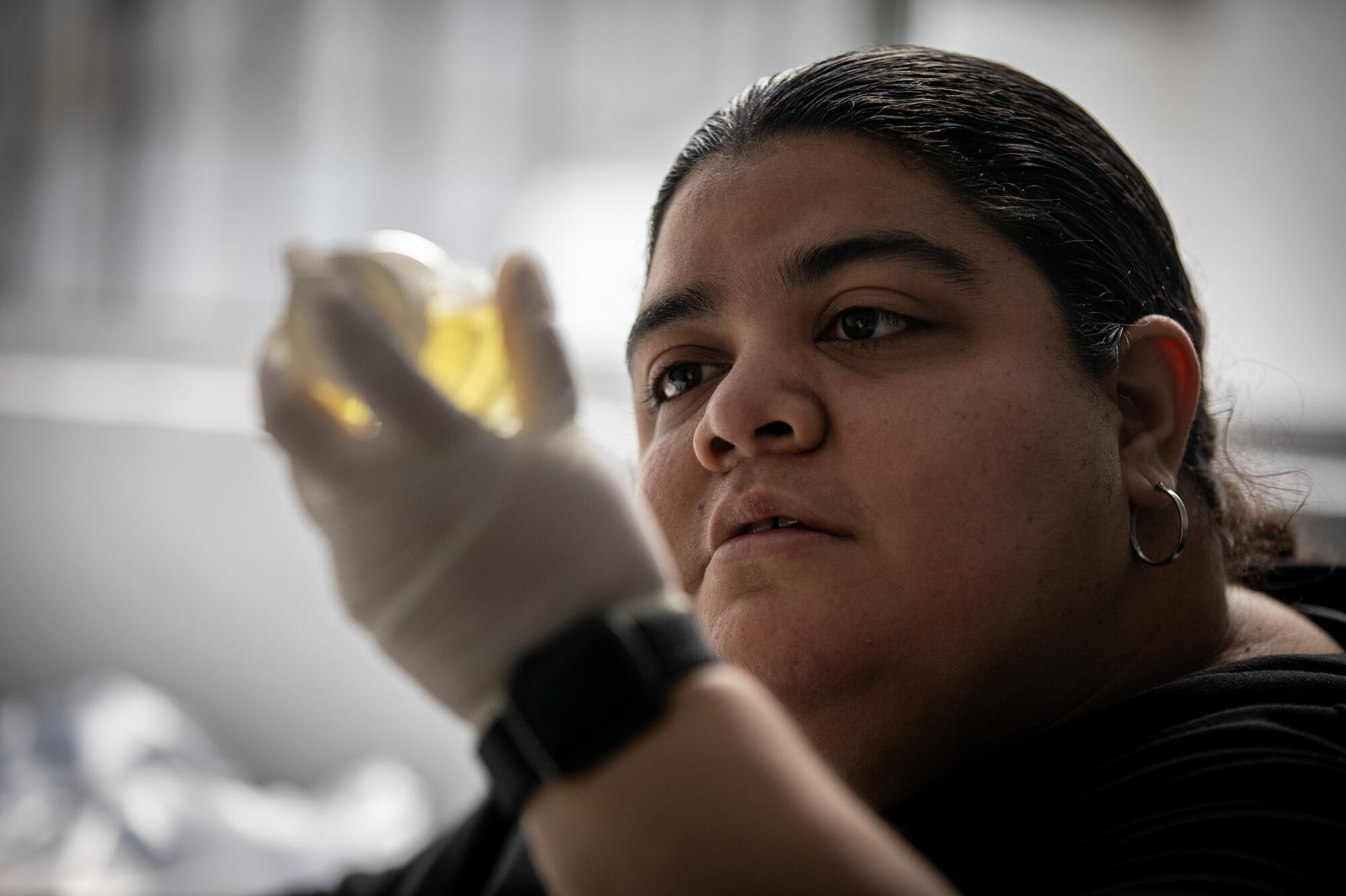
She pointed to ocean water quality testing technology and standards in Mexico, which have not always been as steady as those used in San Diego. The county rolled out with a first-of-its-kind, highly sensitive DNA-based test in 2022.
“(Mexico) would only test the waters during pre-vacation periods like spring break and sometimes issue press releases to advise people about whether the water quality was safe,” said Aguirre. “Now, it’s more robust, more consistent and there’s even beach signs.”
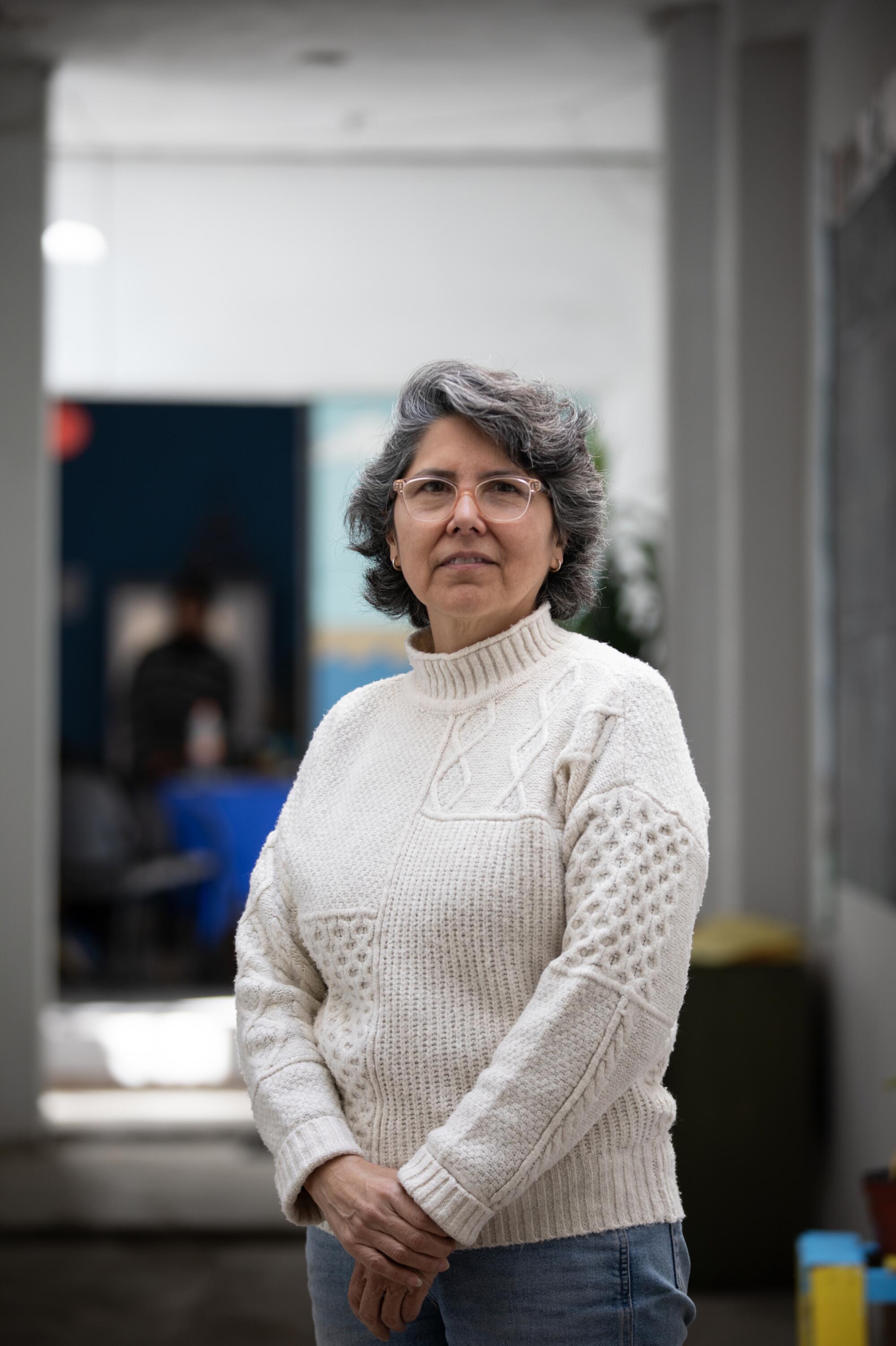
Mexico tests its ocean water quality every week and posts its results online. Proyecto Fronterizo de Educación Ambiental also monitors water quality on Tijuana’s beaches. Every Thursday, a group of researchers, volunteers, and lifeguards collects samples along the coast and the results are posted on social media the next day.
Beaches are considered unsuitable for recreational use if it is above the maximum limit of 200 Enterococci in 100 milliliters of water. Enterococci are the bacteria that indicate the presence of wastewater or water contaminated with feces. In San Diego, water contact is considered unsafe when levels surpass 1,413 DNA copies of that bacteria or 104 Enterococci per 100 milliliters.
Aguirre said there are also “big geographical differences” between both communities. Residents in the U.S. have plentiful options to cleaner sandy beaches just 4 or 5 miles north, while residents in Tijuana do not “because everything else south is rocky beaches.”
Imperial Beach residents said there is a more noticeable level of understanding from South San Diego communities about the impacts of cross-border pollution because of consistent messaging and advocacy from local, state and federal levels.
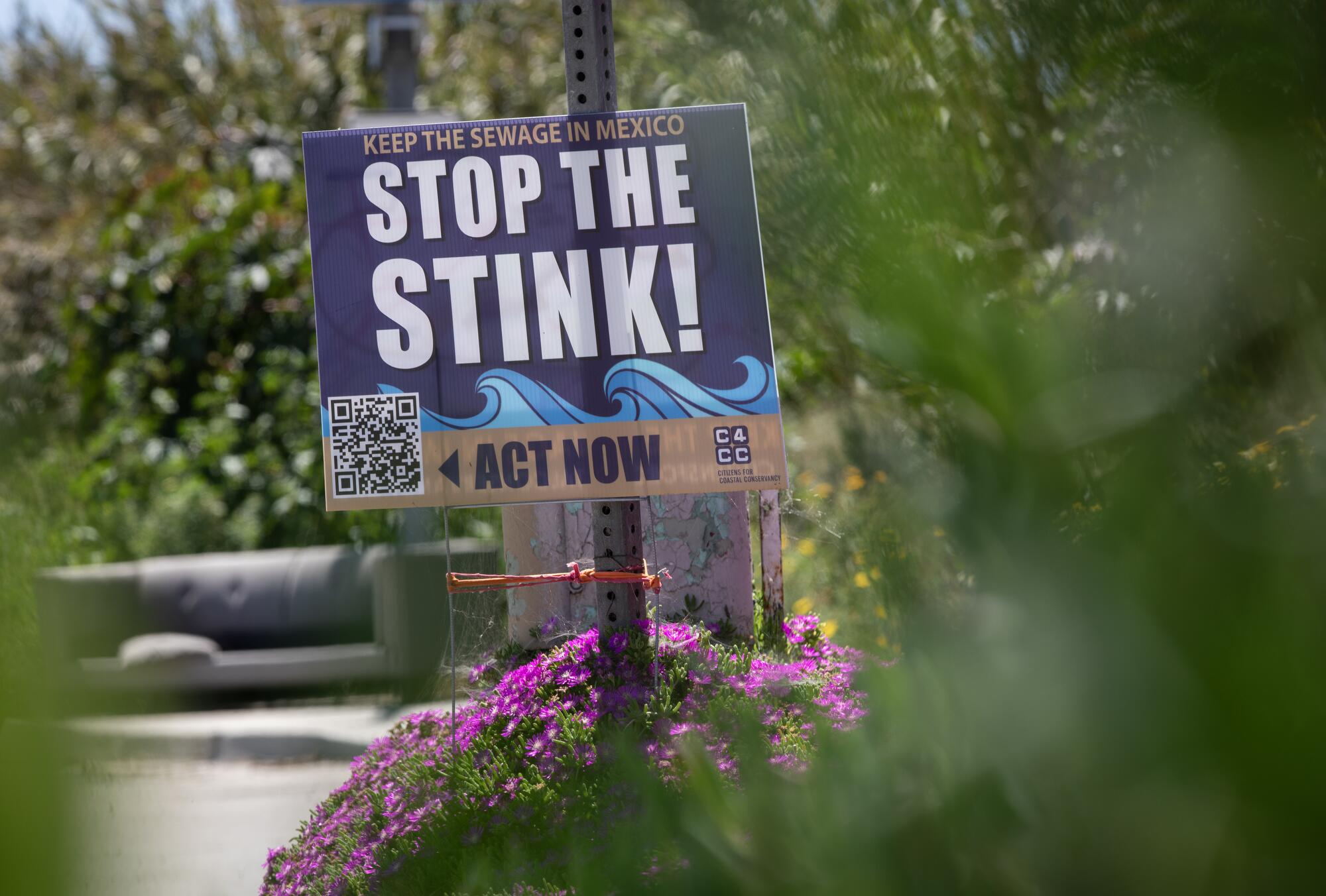
High-schoolers have rallied in their South Bay neighborhoods and penned letters to the federal government for change. Researchers have dedicated years to unveiling the severity and effects of contamination. The crisis has inspired a documentary and photography exhibit. And multiple public agencies have adopted resolutions declaring the issue an emergency.
On March 27, when many families were on spring break, scores of residents filled an Imperial Beach auditorium to hear updates on efforts to end cross-border pollution from a panel of elected officials and researchers studying the health impacts on people.
“We have a right to clean air as humans, and clean water here and everywhere,” resident Agustina Gill, who said she has been dealing with gastrointestinal issues since sewer gas odors have worsened in recent years, told the panel. “I hope this gets taken care of.”
Kurt Ignacio Honold Morales heard multiple impassioned testimonies like that of Gill’s. He is a Coronado resident who works as the secretary of Baja California’s Economy and Innovation Department. He’s also felt the impacts of sewage pollution, he said, and assured the public that evening that the Mexican state government was prioritizing the issue.

“Somebody said (that) in Tijuana we’re not doing (anything),” he said during his presentation on the overhaul of the treatment plant in Baja California. “Yes, that was the truth a long time ago, or six years ago. Now, we are … because (Gov. Avila) is taking the bull by the horns and we want to solve this issue.”
A panel in Imperial Beach with representation from Mexico was a significant moment, said Aguirre.
“I see a very stark difference between the current (Baja California) governor being proactive in communicating about it but also in wanting to fix the issue, taking responsibility and having a level of openness that I haven’t seen before,” Aguirre said.
“The (President Andrés Manuel López Obrador) administration also recognized Tijuana beaches as some of the most polluted in Mexico,” she added. “Just acknowledging that there’s an issue, that’s the first step.”
‘I don’t go in anymore’
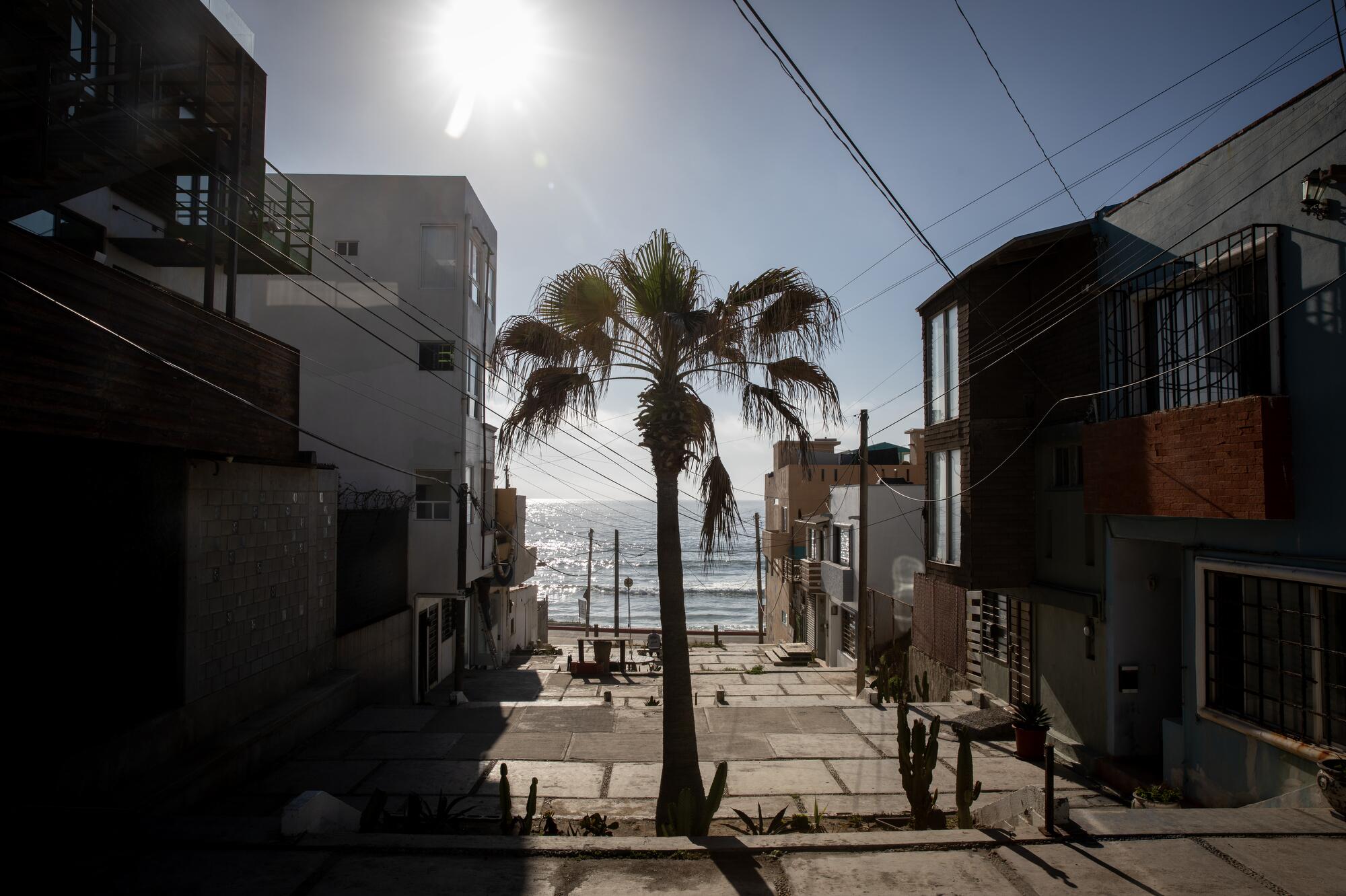
Residents of the beachfront streets in Playas de Tijuana don’t need a sign to know that the beach is unsuitable. They can often see it or smell it. “I don’t feel like going into the water,” said Sara Barajas, who grew up a short walk from the beach.
Barajas, 32, who owns a dress rental business, and her family have lived in the neighborhood for more than three decades. She remembers swimming in the water as a child with her younger brother, but now, she says they prefer to drive 60 or more miles south for a day at the beach. “I would rather go to Ensenada or San Quintín, at least the water is not so dirty.”
But she also said she understands why locals won’t stop visiting the beach despite the pollution. “It’s the only place we have to enjoy,” she said. “If you can’t go outside of Tijuana and you come here, at least you have the playita.”

The last time her brother went in the water was in September. But he admits that if he sees a good wave, nothing is stopping him from grabbing his surfboard and heading out to sea. “Sometimes the swell is worth the risk,” Luis Barajas, 24, said.
Luis lives with his mother, Sara Colmenares, in his childhood home just steps from the beach. Colmenares, 80, said she came to the neighborhood more than 30 years ago because she liked being near the ocean. “It was clean back then, you couldn’t get me off the beach,” she said with a broad smile.
“I always want to, but I don’t go in anymore,” she said. “It’s not possible anymore because of the pollution.”
‘Many of us depend on the beach’

Beach closures have also had an economic impact on both sides of the border.
Noemí Orozco works as a beverage vendor at Playas de Tijuana. Every day for the past 10 years, she comes from the eastern part of the city, picks up her tray and sells piña coladas to beachgoers.
On the eve of Holy Thursday, Orozco noticed that although many people had arrived, it was not as crowded as in previous years. She believes the recent closures, which were widely publicized in local news, may have been a factor. “We hear the same thing every year, that the beach is polluted,” she said.
Orozco noted that she and several other businesses in the area rely on a good turnout for their livelihood. “Many of us depend on the beach,” she said.
Eliot Hernández has been a surf instructor in the neighborhood for 15 years. It’s hard to find someone around who doesn’t know him.
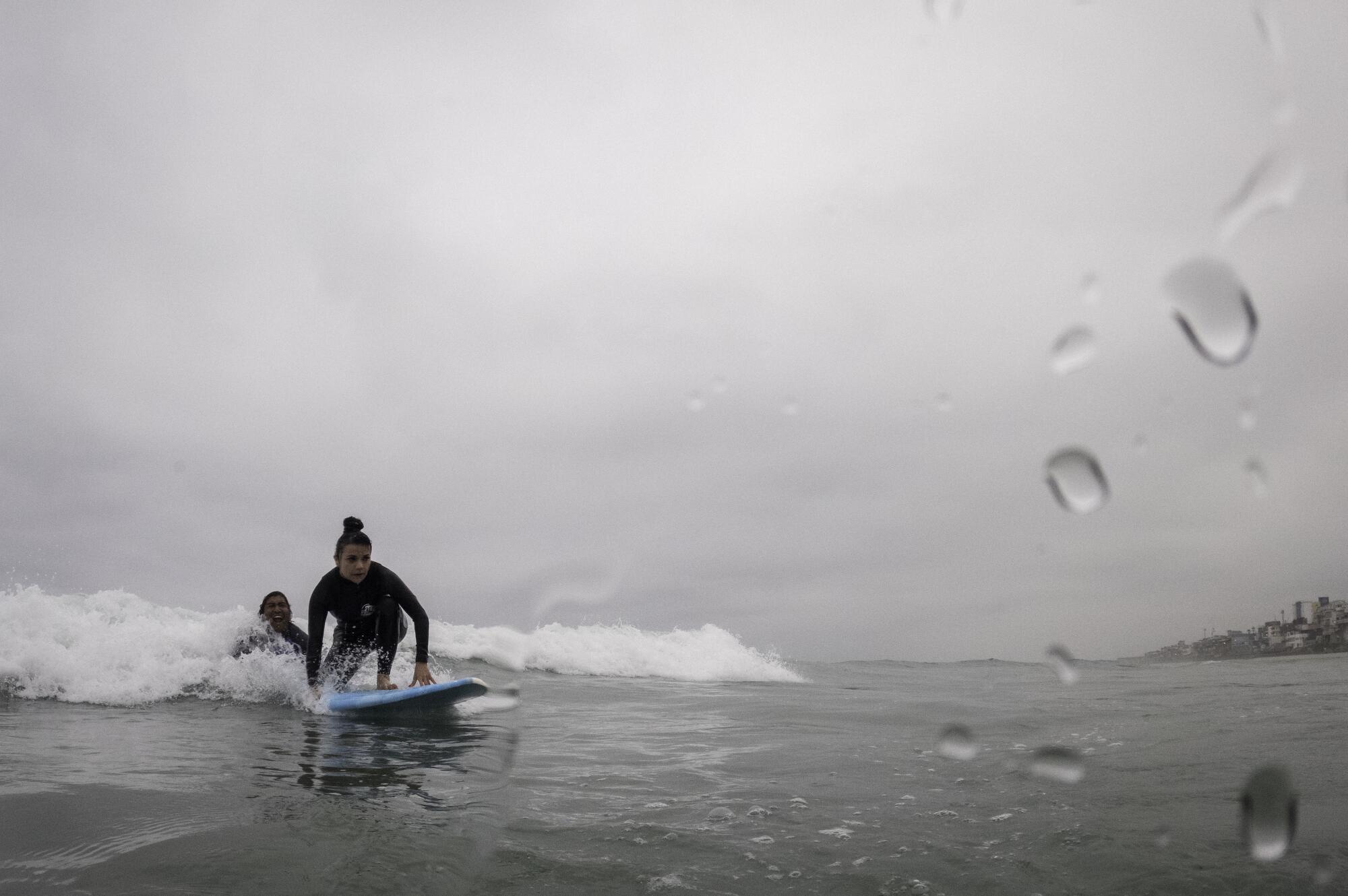
Every morning before class, he arrives half an hour early to make sure the ocean conditions are right. He checks the color of the water, the tides, the smell. If conditions are not proper, he sends a text message to his students to let them know that the class will have to be postponed. Unfortunately, he said, that’s something that happens a lot.
“I can’t put people at risk,” he said. “My job is to protect them,” added Hernández, who is also a lifeguard.
North of the border fence, Moises Martinez, a cook at the Tin Fish, the lone eatery on the Imperial Beach pier, said tourists are often the ones who complain about the beach closures. “Because residents just know that’s the way it is here,” he said.
The small, coastal city of about 27,000 people has had consistent beach closures over the last two years, severely impacting its economy and limiting its recreational amenities.
Keeping pace with the city’s growth
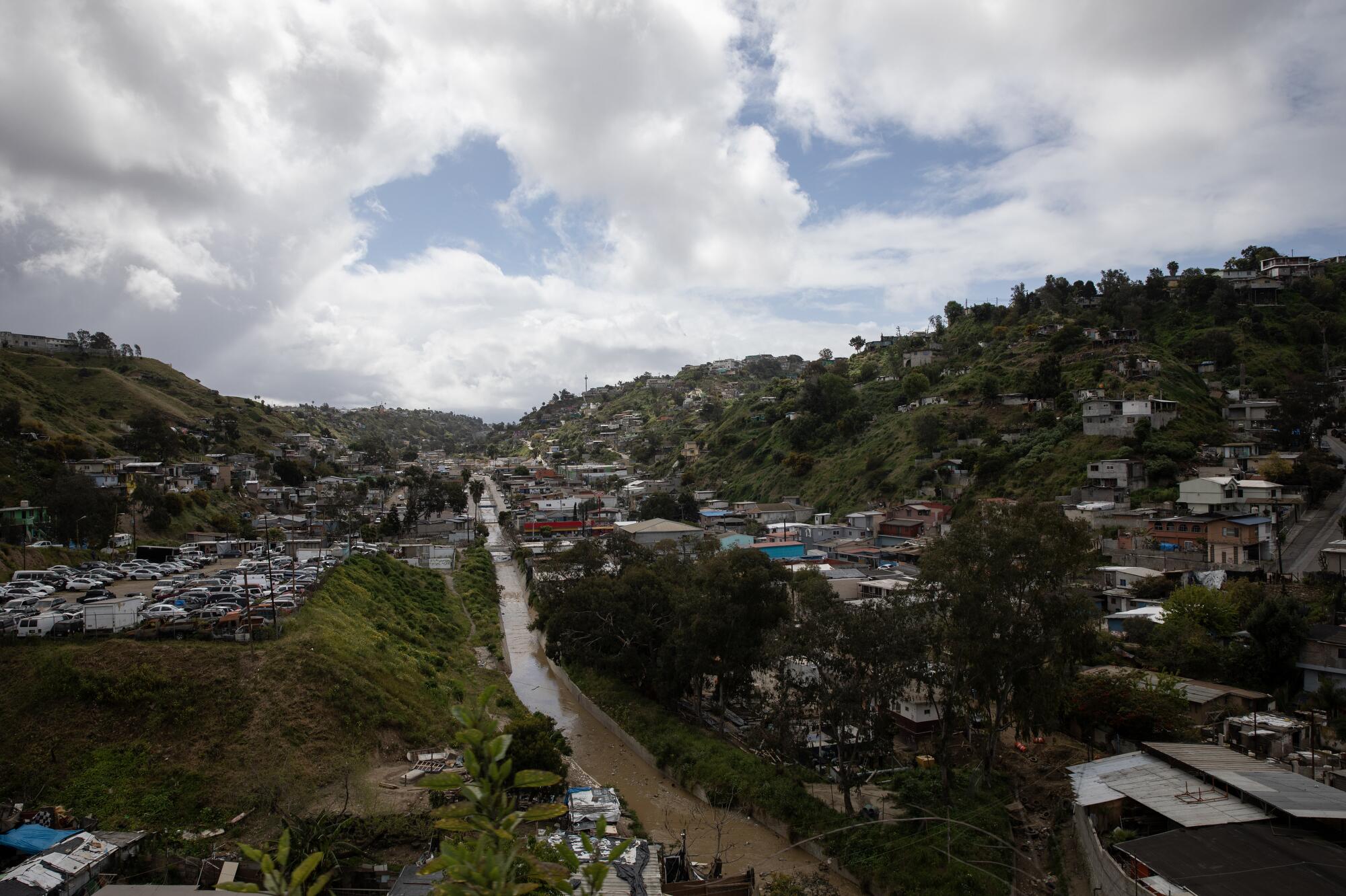
The sewage crisis is partly due to Tijuana’s rapid population growth, said Díaz, the environmental nonprofit director. Tijuana has a population of 1.92 million — a 23 percent increase compared to 2010, according to the 2020 census.
Jesús García Castro, director of the State Commission of Public Services of Tijuana, or CESPT, said that the Punta Bandera treatment plant, along with 14 others in operation in Tijuana and an ongoing new water collector project, should be “sufficient” given the city’s growth. “We have to wait a little longer, at least until September, to have healthy beaches,” he said.
He estimated that discharges will be reduced by 90 percent.
He added that the priority is to curb pollution, including other projects to reuse treated water.
“This is the emergency or crisis that we have, both with the citizens of Tijuana and Rosarito and, of course, California,” he said, “because it is the same beach.”
Get Essential San Diego, weekday mornings
Get top headlines from the Union-Tribune in your inbox weekday mornings, including top news, local, sports, business, entertainment and opinion.
You may occasionally receive promotional content from the San Diego Union-Tribune.
